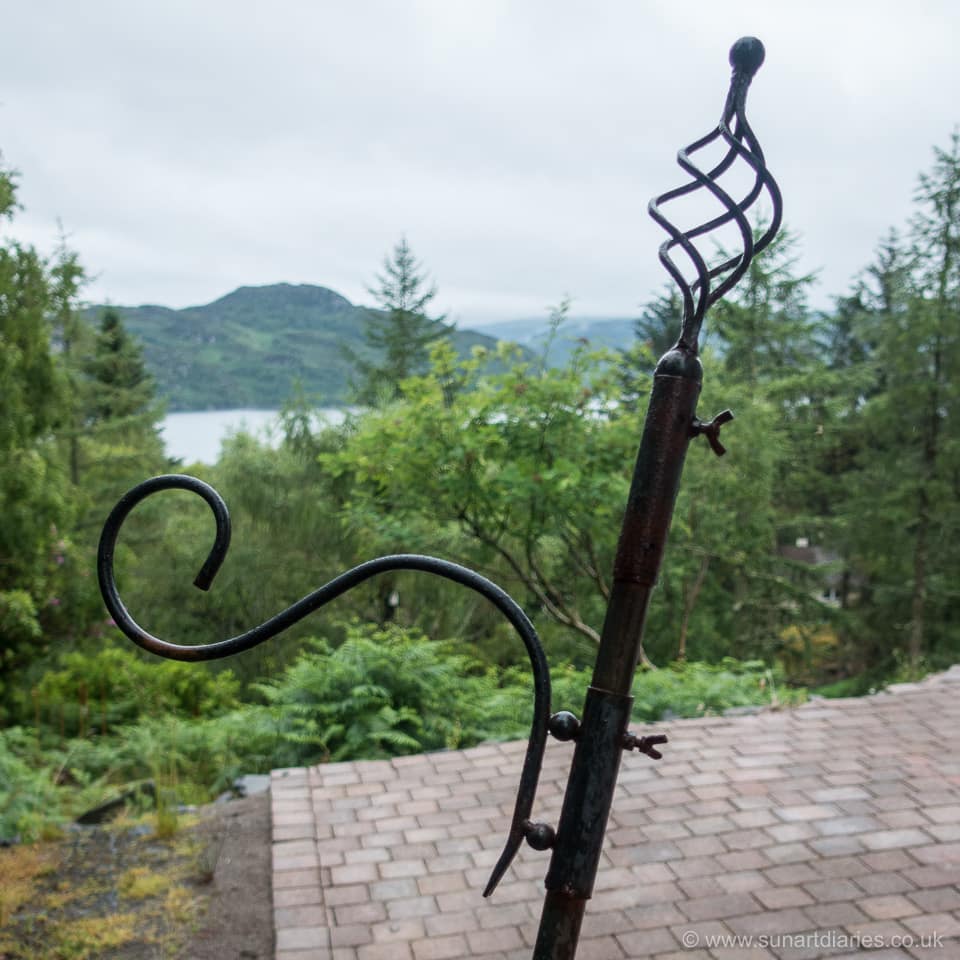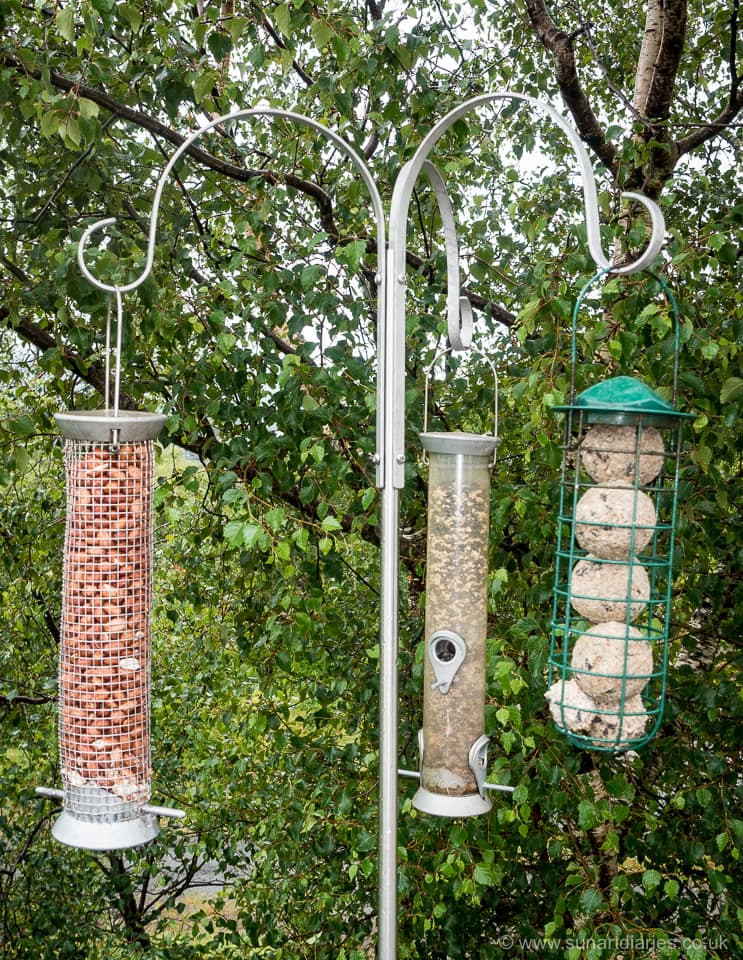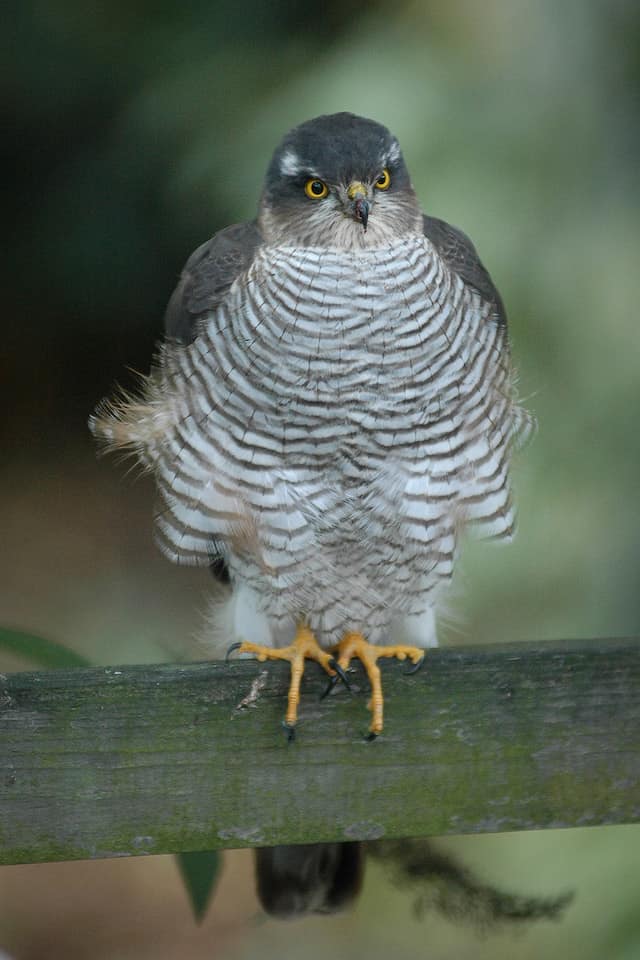Ardnamurchan has had fabulous Spring weather during the Covid-19 lockdown, with day after day of sunshine and blue skies. Mid-March to mid-May were particularly fine.

Eigg and Rum from the summit of Meall nan Each, mid-April 2020
All good things must come to an end and there has been some wet and windy weather more recently. During the most recent thunderstorms the server 1 that runs this site was tripped, leading to an outage for several days. Not the end of the world by any means, but irritating nevertheless. Normal service is now resumed 2.

Radio silence for three days in late June
A more important victim of bad weather earlier in the month was my bird feeder stand. This started life with three curly arms, each designed to take a hanging nut or seed feeder. It was made out of pretty flimsy metal with only a thin covering of paint.
Which soon started to peel and flake off 😞
And once the water gets to the metal things start to rust. One arm was lost last winter, corroded beyond repair. The second disintegrated in early June, leaving the feeder stand looking rather forlorn.

‘armless … and almost useless
And the arm that remained was distinctly wobbly. It was time for a replacement.
These feeder stands cost £15-25 from any number of different online sources. All are made in much the same way and most make no claim to be rustproof.
Those that claim to be almost certainly are not 3.
The one in the picture above was a little under two years old. At about £10 a year this is a poor investment.
Weatherproof

316 grade goodness
The weather is a reality here on the west coast. There’s no escaping it. In strong westerlies the wind is laced with salt from the Atlantic, readily (and steadily) destroying any bare or poorly protected metalwork.
The obvious thing was to replace the feeder stand with something better designed to withstand the elements. Plastic or stainless steel were the obvious choices. The former were either unbelievably tacky or very flimsy … or, in most cases, both.
But try finding a stainless steel bird feeder stand …
There’s an extremely limited choice if you don’t want to get one custom built. There were one or two modern-looking ones with folded metal bird tables on top, designed to integrate into a town garden perhaps. These would have looked a little out of place in our rhododendron-choked wilderness.
And there was the one shown above.
This was handmade by Kain Design, a father and son team of metalworkers in Essex. It is simplicity itself, with a two piece 16mm diameter satin-finished tube, sealed at the top, and three sandblast-finished curved arms. Everything fits together beautifully with stainless steel screws and the finished product 4 is two metres tall and very sturdy.
I used Loctite Threadlocker Blue 242 on the screw threads when assembling the bird feeder stand. This should at least reduce things falling off as it vibrates and resonates in the winter storms.
Bird (and mammal) feeding
I feed the Ardnamurchan birds year-round. Suet balls, mixed feeder seed (black sunflowers mainly) and peanuts and we get a never-ending stream of birds visiting; gold- and chaffinches, tits (blue, great, coal and - rarely - long-tailed), siskins and most of the woodpeckers west of Salen.

Normal service is resumed
Inevitably it’s not just the small passerines that benefit from the bird feeder.

Sparrowhawk, female
We get regular low-level flybys from spectacularly yellow-eyed sparrowhawks. Sometimes they just seem to zoom through and stick out a leg in passing, hoping to make contact with something, anything, as they scatter into the birch tree.
Other times they make their feint and grab attempt, rarely seeming to succeed, and then pitch up for a breather on the railing or the patio. The male is strikingly attractive, with blue-grey upperparts and a barred breast suffused with orange, and surprisingly small. Falconers used to call males ‘muskets’, reflecting their diminutive size, which is derived from the Latin musca, meaning ‘a fly’.
In the evening the mice emerge from crevices in the wall and finish off the leftovers.
Unless the pine marten is visiting.
This pine marten is not being eponymic. I placed a handful of wood offcuts in the “squirrel” feeder to reduce the rate at which she 5 scoffed the peanuts. One of the pine martens (this one) that visits has taken to removing some of the wood offcuts to get better access.
I’m still trying to get a better, more “natural”, photograph of a pine marten. Although they usually visit in daylight, the lighting is often not good enough. It’s tricky, and it’s even more difficult to get the mother and kits together.
As W.C. Fields said “Never work with animals or children”.
-
Currently a diminutive Raspberry Pi. ↩︎
-
At least, if you’re reading this it has been. ↩︎
-
And if there’s one thing that lockdown has taught me it’s that I’m sick and tired of returning things that were not fit for purpose or otherwise substandard. In the ‘good old days’ you could have judged them in advance in the shop or garden centre, now you just have to take a punt based on a 2" square 72dpi image on a website. ↩︎
-
Delivered in packing made out of three taped-together pizza boxes! ↩︎
-
I think .. though we have got others visiting, including family parties of a female and kits. ↩︎